
How to Use L298N Dual H-Bridge Motor Driver: Examples, Pinouts, and Specs
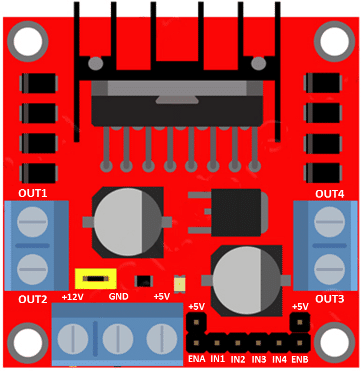
 Design with L298N Dual H-Bridge Motor Driver in Cirkit Designer
Design with L298N Dual H-Bridge Motor Driver in Cirkit DesignerIntroduction
The L298N Dual H-Bridge Motor Driver, manufactured by Handson Technology (Part ID: Motor Driver), is a versatile and robust motor driver module. It is designed to control the direction and speed of two DC motors or one stepper motor. The module is capable of handling up to 2A per channel and operates at voltages ranging from 5V to 35V, making it suitable for a wide range of motor control applications.
Explore Projects Built with L298N Dual H-Bridge Motor Driver
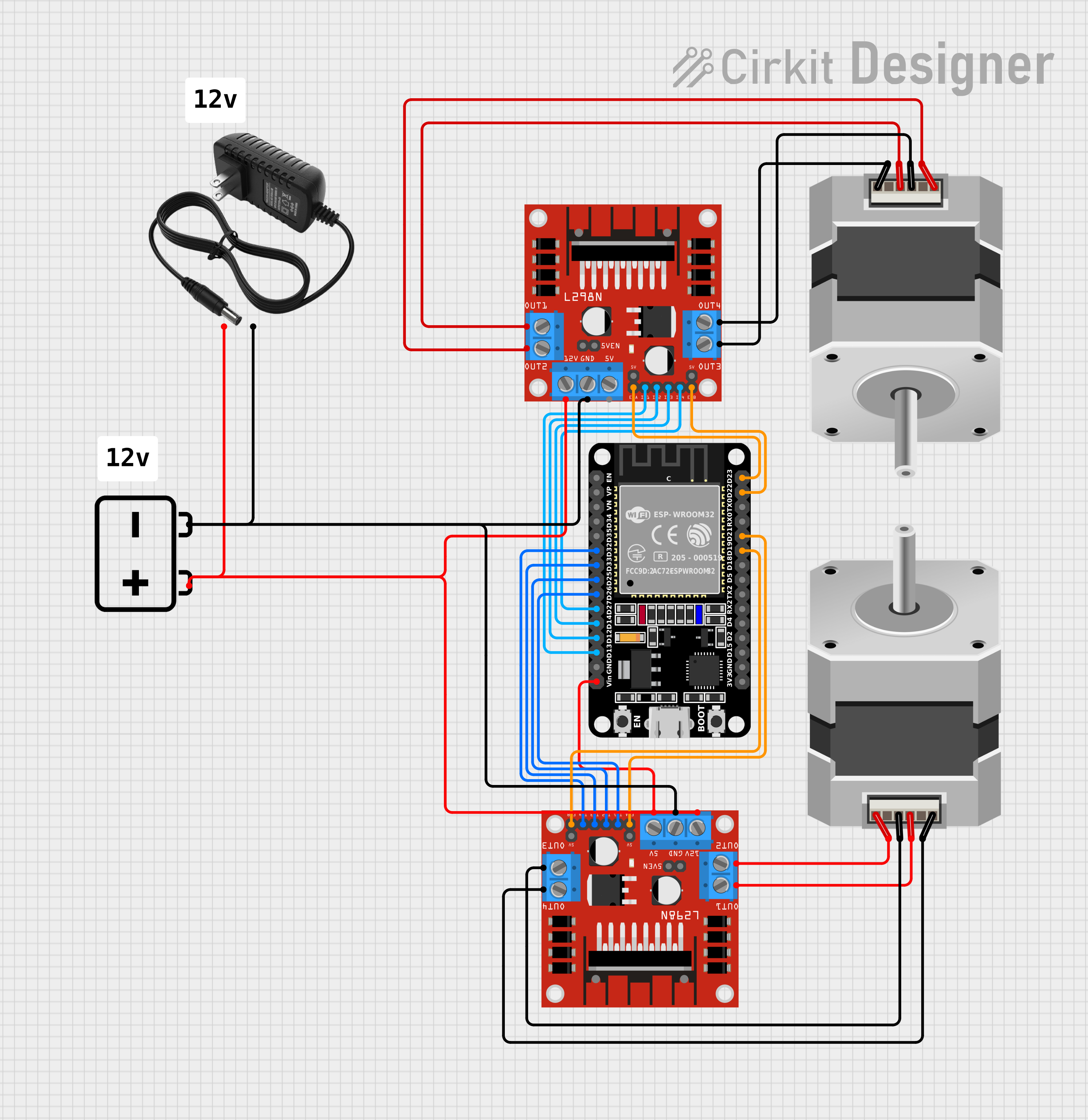
 Open Project in Cirkit Designer
Open Project in Cirkit Designer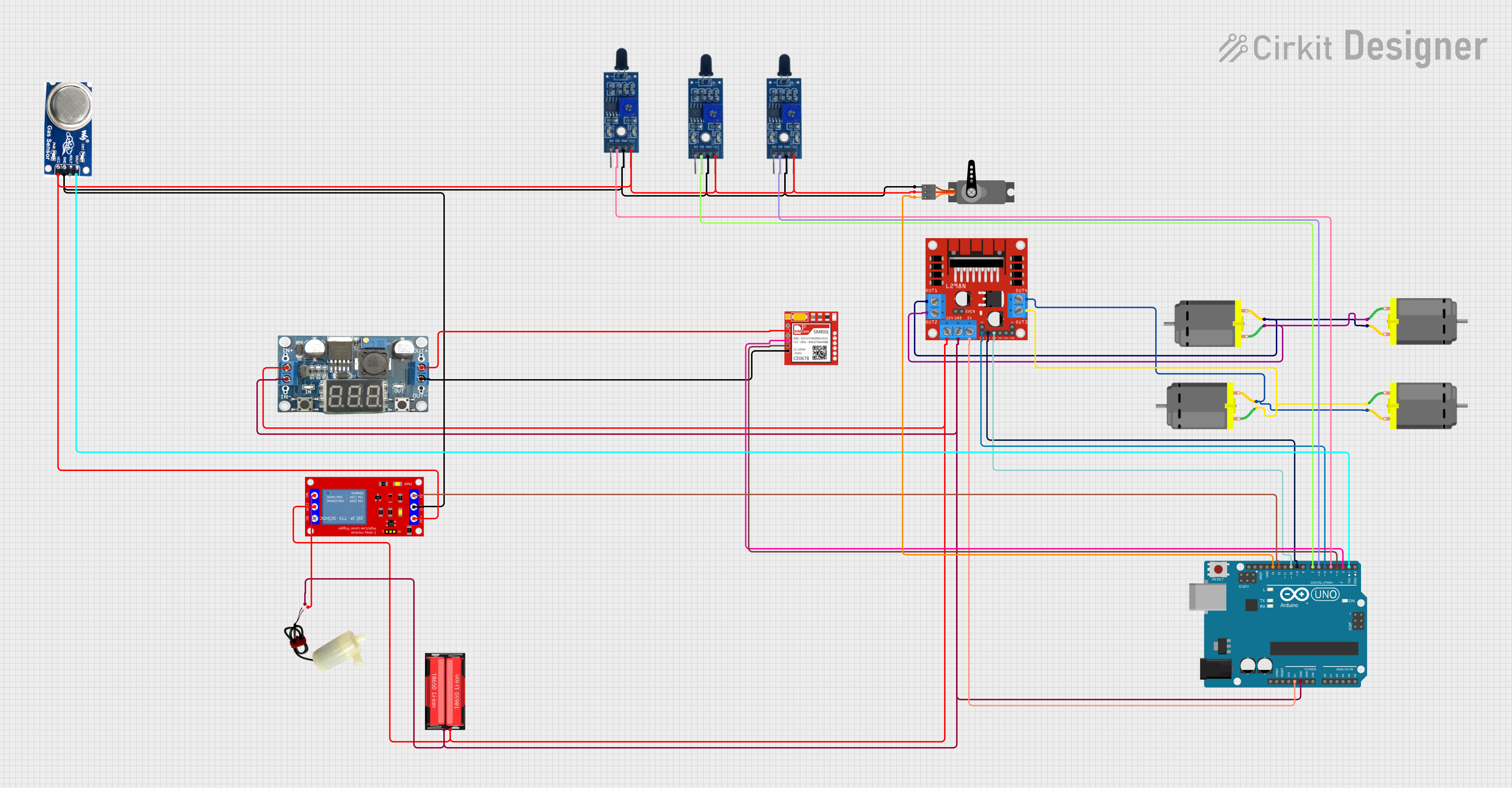
 Open Project in Cirkit Designer
Open Project in Cirkit Designer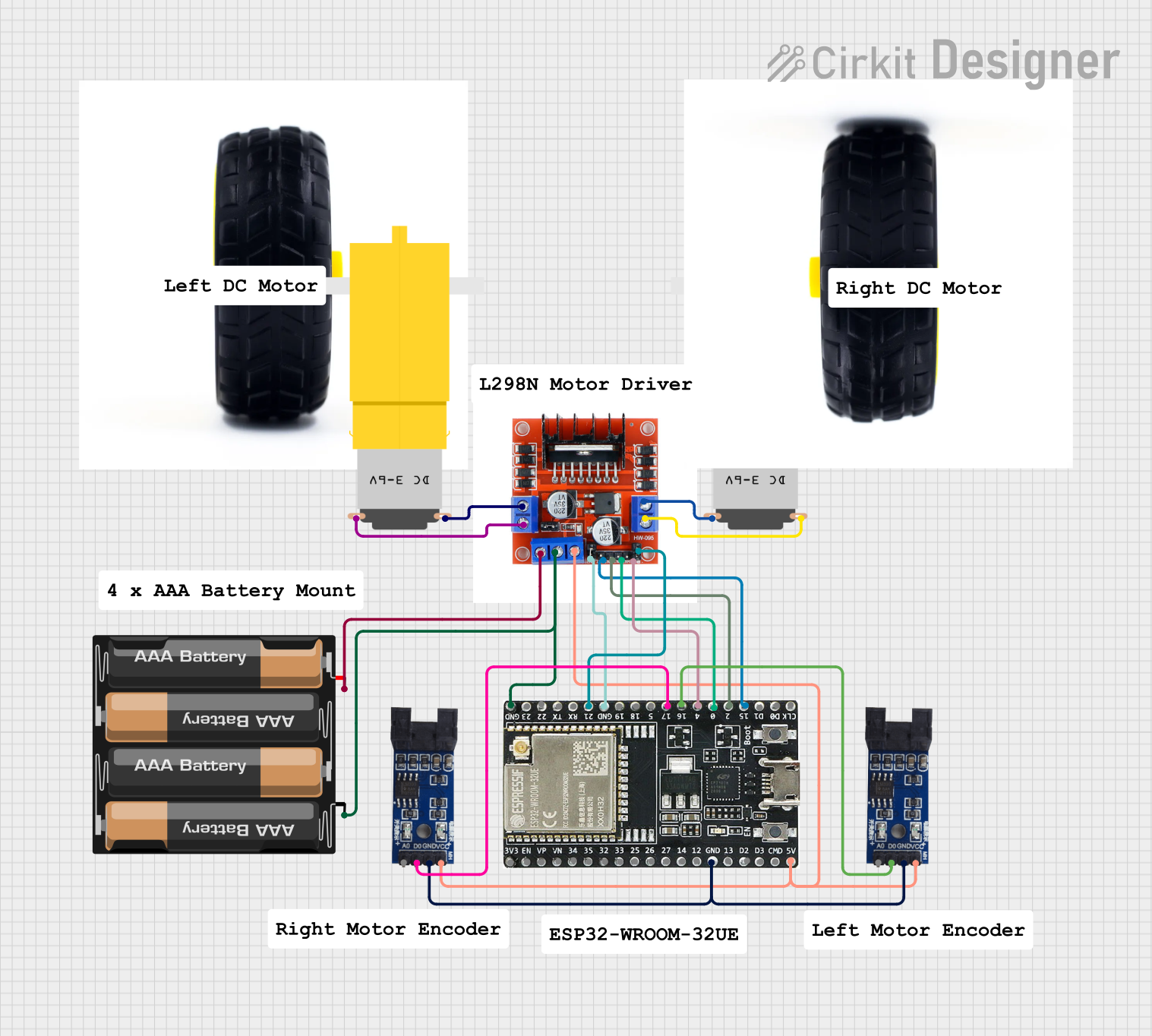
 Open Project in Cirkit Designer
Open Project in Cirkit Designer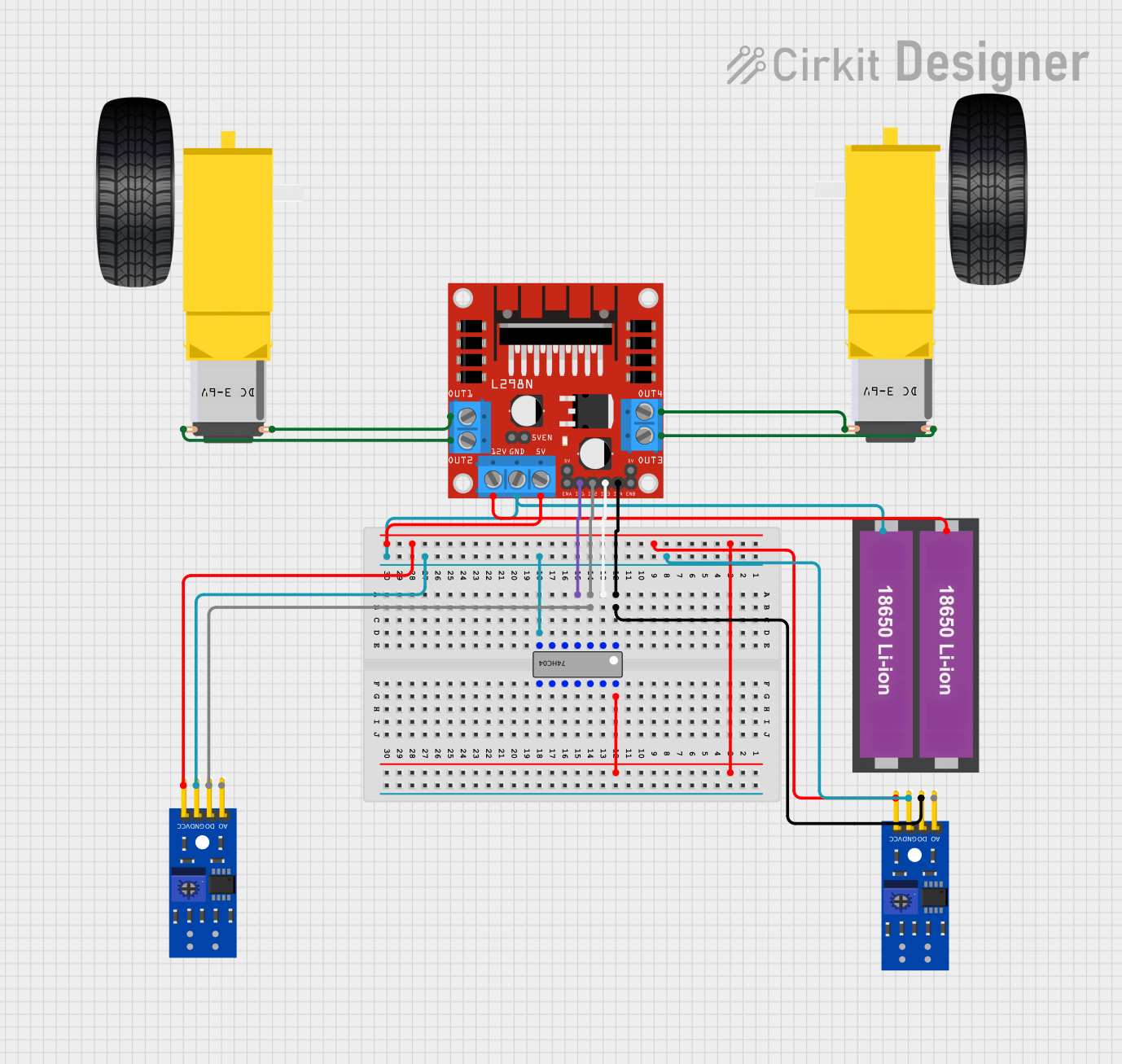
 Open Project in Cirkit Designer
Open Project in Cirkit DesignerExplore Projects Built with L298N Dual H-Bridge Motor Driver

 Open Project in Cirkit Designer
Open Project in Cirkit Designer
 Open Project in Cirkit Designer
Open Project in Cirkit Designer
 Open Project in Cirkit Designer
Open Project in Cirkit Designer
 Open Project in Cirkit Designer
Open Project in Cirkit DesignerCommon Applications and Use Cases
- Robotics: Driving wheels or tracks of robots.
- Automation: Controlling conveyor belts or actuators.
- DIY Projects: Building RC cars, drones, or other motorized devices.
- Stepper Motor Control: Driving stepper motors for precise positioning.
Technical Specifications
Below are the key technical details of the L298N Dual H-Bridge Motor Driver:
| Parameter | Value |
|---|---|
| Operating Voltage | 5V to 35V |
| Maximum Current per Channel | 2A |
| Logic Voltage | 5V |
| Control Logic Levels | High: 2.3V to 5V, Low: 0V |
| Power Dissipation | 25W (with proper heat dissipation) |
| Motor Channels | 2 (independent) |
| Dimensions | 43mm x 43mm x 27mm |
Pin Configuration and Descriptions
The L298N module has several pins and terminals for motor control and power input. Below is a detailed description:
Power and Motor Terminals
| Pin/Terminal | Description |
|---|---|
| VCC | Power supply for motors (5V to 35V). |
| GND | Ground connection. |
| 5V | Logic voltage output (used if onboard regulator is active). |
| OUT1, OUT2 | Outputs for Motor A. |
| OUT3, OUT4 | Outputs for Motor B. |
Control Pins
| Pin | Description |
|---|---|
| ENA | Enable pin for Motor A (PWM input for speed control). |
| ENB | Enable pin for Motor B (PWM input for speed control). |
| IN1, IN2 | Control pins for Motor A direction. |
| IN3, IN4 | Control pins for Motor B direction. |
Usage Instructions
How to Use the L298N in a Circuit
Power Connections:
- Connect the motor power supply to the VCC terminal (5V to 35V).
- Connect the ground of the power supply to the GND terminal.
- If using the onboard 5V regulator, the 5V pin can be used to power the logic circuit.
Motor Connections:
- Connect the motor terminals to OUT1/OUT2 (Motor A) and OUT3/OUT4 (Motor B).
Control Connections:
- Use the ENA and ENB pins to enable or disable the motors. These pins can also accept PWM signals for speed control.
- Use IN1/IN2 to control the direction of Motor A and IN3/IN4 for Motor B.
Logic Power:
- If the motor power supply is greater than 12V, disconnect the onboard 5V regulator jumper and provide an external 5V logic supply.
Important Considerations and Best Practices
- Ensure proper heat dissipation by using a heatsink or fan if the current exceeds 1A per channel.
- Use diodes or capacitors to suppress voltage spikes caused by motor back-EMF.
- Avoid exceeding the maximum voltage and current ratings to prevent damage to the module.
Example: Connecting to an Arduino UNO
Below is an example of how to control a DC motor using the L298N and an Arduino UNO:
Circuit Connections
- Motor A: Connect to OUT1 and OUT2.
- ENA: Connect to Arduino pin 9 (PWM).
- IN1: Connect to Arduino pin 8.
- IN2: Connect to Arduino pin 7.
- VCC: Connect to motor power supply (e.g., 12V).
- GND: Connect to Arduino GND.
Arduino Code
// Define control pins for Motor A
#define ENA 9 // PWM pin for speed control
#define IN1 8 // Direction control pin 1
#define IN2 7 // Direction control pin 2
void setup() {
// Set motor control pins as outputs
pinMode(ENA, OUTPUT);
pinMode(IN1, OUTPUT);
pinMode(IN2, OUTPUT);
}
void loop() {
// Rotate motor forward
digitalWrite(IN1, HIGH); // Set IN1 high
digitalWrite(IN2, LOW); // Set IN2 low
analogWrite(ENA, 150); // Set speed (0-255)
delay(2000); // Run for 2 seconds
// Rotate motor backward
digitalWrite(IN1, LOW); // Set IN1 low
digitalWrite(IN2, HIGH); // Set IN2 high
analogWrite(ENA, 150); // Set speed (0-255)
delay(2000); // Run for 2 seconds
// Stop motor
digitalWrite(IN1, LOW); // Set IN1 low
digitalWrite(IN2, LOW); // Set IN2 low
analogWrite(ENA, 0); // Set speed to 0
delay(2000); // Wait for 2 seconds
}
Troubleshooting and FAQs
Common Issues and Solutions
Motors Not Running:
- Ensure the ENA and ENB pins are enabled (HIGH or PWM signal).
- Verify the motor power supply voltage is within the acceptable range (5V to 35V).
Overheating:
- Check if the current exceeds 1A per channel. Use a heatsink or fan for cooling.
- Ensure proper ventilation around the module.
Erratic Motor Behavior:
- Check for loose connections or faulty wiring.
- Add capacitors across motor terminals to suppress noise.
Arduino Not Controlling the Motor:
- Verify the control pins (IN1, IN2, ENA, etc.) are correctly connected to the Arduino.
- Ensure the Arduino is powered and the code is uploaded correctly.
FAQs
Q: Can the L298N drive stepper motors?
A: Yes, the L298N can drive a bipolar stepper motor by controlling the two H-bridges independently.
Q: What is the purpose of the onboard 5V regulator?
A: The onboard 5V regulator provides logic power to the module when the motor power supply is greater than 7V. If using an external 5V logic supply, disconnect the regulator jumper.
Q: Can I use the L298N with a 3.3V microcontroller?
A: Yes, but ensure the control logic levels are compatible. Use level shifters if necessary.
This concludes the documentation for the L298N Dual H-Bridge Motor Driver.